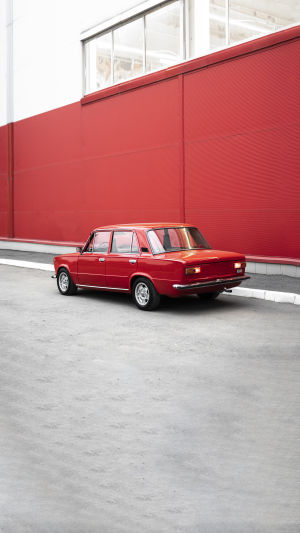In the vibrant world of automotive aesthetics, the type of paint used on a car plays a pivotal role in defining its appearance, longevity, and overall appeal.
The evolution of car paint technology has brought forth a diverse array of options, each with its own unique characteristics and applications.
Let's delve into the intricate realm of car paint, dissecting the various types that adorn vehicles on the road today.
<b>Enamel Paint: The Classic Choice</b>
Enamel paint has been a longstanding favorite in the automotive industry. Composed of pigment, resin, and solvent, enamel provides a durable and glossy finish. This type of paint is known for its resistance to weathering and chemical damage, making it a popular choice for both classic and modern vehicles. Its ability to withstand the elements, coupled with its ease of application, has ensured its continued relevance.
<b>Urethane Paint: A Modern Marvel</b>
Urethane paint has gained prominence in recent years due to its exceptional durability and versatility. Comprising urethane resin, pigment, and a catalyst, this type of paint forms a robust and long-lasting finish. Urethane paints are known for their high-gloss appearance, resistance to UV rays, and superior color retention. Moreover, they are available in both single-stage and basecoat/clearcoat systems, providing customization options for car enthusiasts.
<b>Acrylic Paint: A Balance of Quality and Affordability</b>
Acrylic paint strikes a balance between cost-effectiveness and quality. Composed of acrylic polymer, pigment, and water, acrylic paint is environmentally friendly and easy to work with. While not as durable as enamel or urethane, it offers a decent level of protection and a glossy finish. The affordability of acrylic paint has made it a popular choice for budget-conscious consumers who still seek an appealing aesthetic for their vehicles.
<b>Metallic Paint: Adding Sparkle to Surfaces</b>
Metallic paint incorporates small metallic particles, such as aluminum flakes, into the mixture, creating a sparkling effect when exposed to light. This type of paint is often used to enhance the visual appeal of cars by giving them a luxurious and dynamic finish. Metallic paints can be based on various paint types, including enamel, urethane, or acrylic, offering a wide range of options for consumers seeking a touch of sophistication.
<b>Pearlescent Paint: The Elegance of Iridescence</b>
Pearlescent paint takes automotive aesthetics to a new level with its iridescent qualities. By incorporating synthetic mica or other reflective particles, this paint creates a subtle shifting of colors depending on the angle of view and lighting conditions. Pearlescent paints are often applied over a basecoat or clearcoat system, adding depth and sophistication to the vehicle's appearance. This type of paint is a popular choice for those who desire a distinctive and elegant finish.
The world of car paint is a diverse and dynamic landscape, offering an array of choices for consumers seeking to customize and protect their vehicles. From the classic durability of enamel to the modern marvel of urethane, each type of paint brings its own unique set of characteristics to the palette. Whether aiming for a glossy and enduring finish or a sparkling and iridescent allure, car owners can find the perfect match to express their individuality on the open road. As technology continues to advance, the evolution of car paint will undoubtedly bring forth even more options, further enhancing the artistry of automotive aesthetics.





